Private backyard
Although many are unconcerned about privacy in their backyards, I consider it the best room of the house and want it to be just as private as the rest of my house.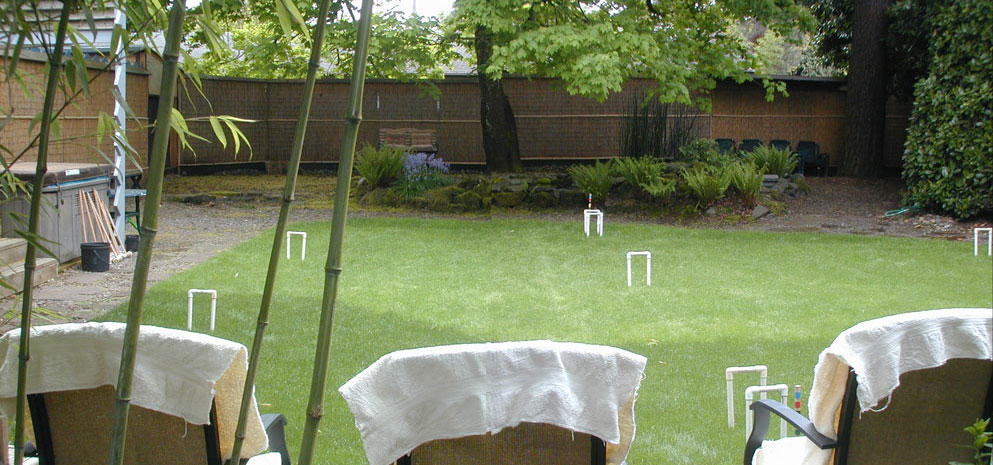
Ready for a day of Zombie Croquet at the Mystery Hole

Ready for a day of Zombie Croquet at the Mystery Hole
Due to the City of Portland’s belief that squeezing many more of us in is smart growth, buildings are going up all over. It’s the up part that most concerns me. A new building has gone up nearby with four third-story apartments that look into my previously private mini-resort.
Faced with the primal choice of fight or flight, I’ve decided to stay. There’s no fighting the in-filling now, so I’ve tackled the view. Screening of the eight new windows is accomplished in several ways: physical barriers, training existing plantings, enhancing vegetation, and new plantings.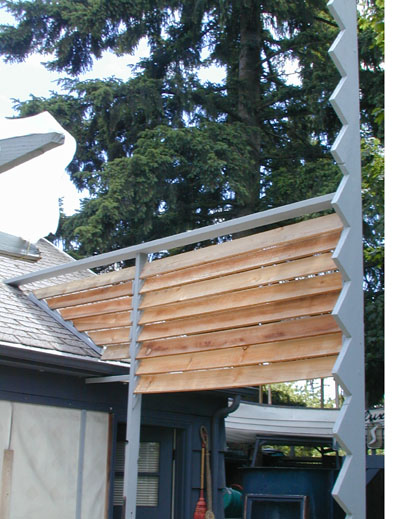
Louvers completely screen an area while allowing the wind to blow
through, avoiding bothersome reconstruction after windstorms.
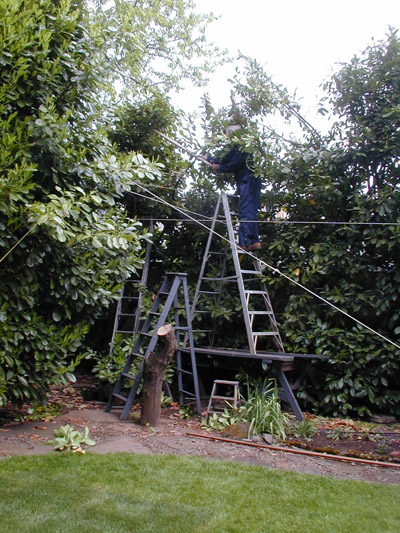
Some branches connect to other branches, limbs, or trunks. Some are pulled into position with a rope anchored to a stake in the ground. In time, the cherry laurel Prunus laurocerasus will learn to like their imposed positions.
An apple tree (trunk in center) had to come out of the corner to let sun shine on the laurel during prime growth times. Fruit or privacy? I can buy fruit.
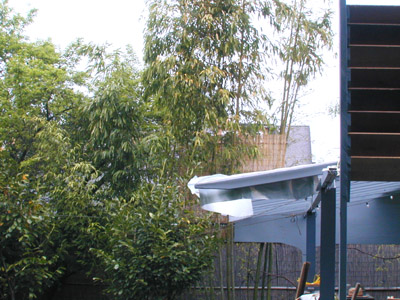
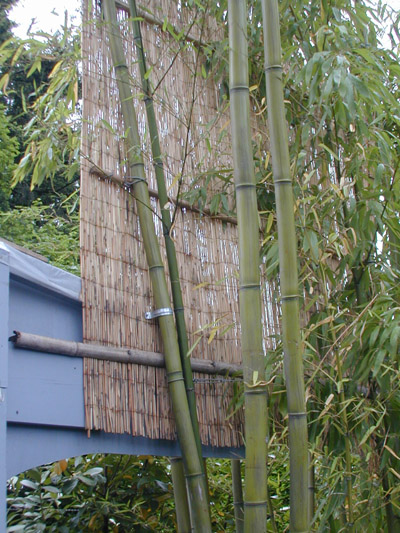
It’s important that added screening blend in for the sake of my northern
adjacent neighbors, whose view above the fence between us is the bamboo and
reeds.
New bamboo shoots emerge in late May and with luck they’ll hide the reeds even more. After transplanting, timber bamboo sends up smaller shoots for a couple of years. This will suit our needs well because they leaf out at a lower height when they’re smaller.

One year later: transplant on left died and the other was moved closer to the
fence. Placing the laurel at the edge of the lawn was not ideal: it
eliminated the last little bit of winter sun, and they were constantly in the
way.
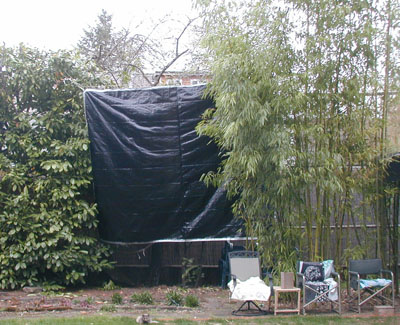
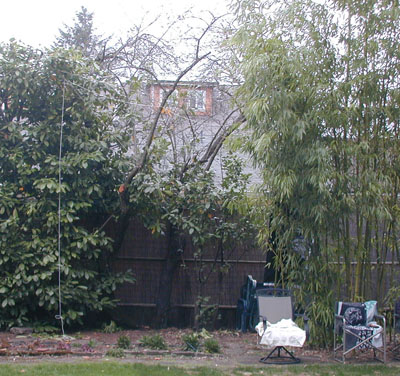
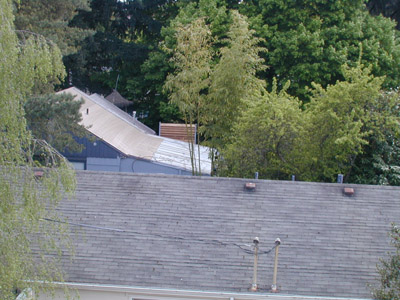

Laurel trained to minimize gaps, and allowed to grow to fill them.
Italian prune helps while it has leaves.

More information about laurel and more

Cap is two 1x6 fence boards screwed together at 90 degrees. This increases height and protects top of reeds from rain, falling branches, ‘possum, and ‘coons. Skirting is one foot high, made of salvaged 3/4 inch plywood covered with black roll roofing cut into three long strips.
Six feet is the maximum height without engineering and a variance here, but if no one complains, the city rarely bothers with enforcement. Reed fencing with split bamboo battens covers the inside posts and stringers. I prefer this look to a solid board fence. Lath secured along one edge (hidden behind reeds) covers gaps between fence boards as they dry and separate.
East side of backyard is the house itself, which is difficult to see through.
I’m glad we don’t have the restrictions on privacy enhancements that so many Pennsylvania townships have: fences must be set back five feet from the property line. Here they go right on the line and don’t waste space. Five-foot set backs are the rule for buildings, but not fences.
There’s a height restriction on front yard fences: three and a half feet. They want to preserve the open feeling of neighborhoods. That may be the same subjective justification in Pennsylvania. Again, unless someone complains, it’s okay—very important to stay on good terms with all the neighbors.
I’m interested in reading and seeing how others have achieved privacy, so please send me your url, or photos, or descriptions. If you don’t mind that I include them here, please let me know, otherwise I won’t.
I wish you well in your own efforts to expand your personal living space into the out of doors.
That’s all for now.
Email Barron
Back to Barron’s webpages’ index